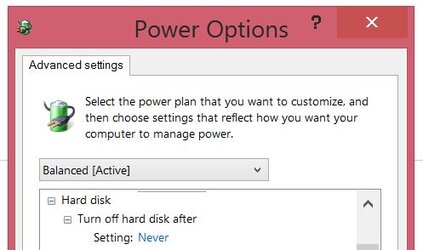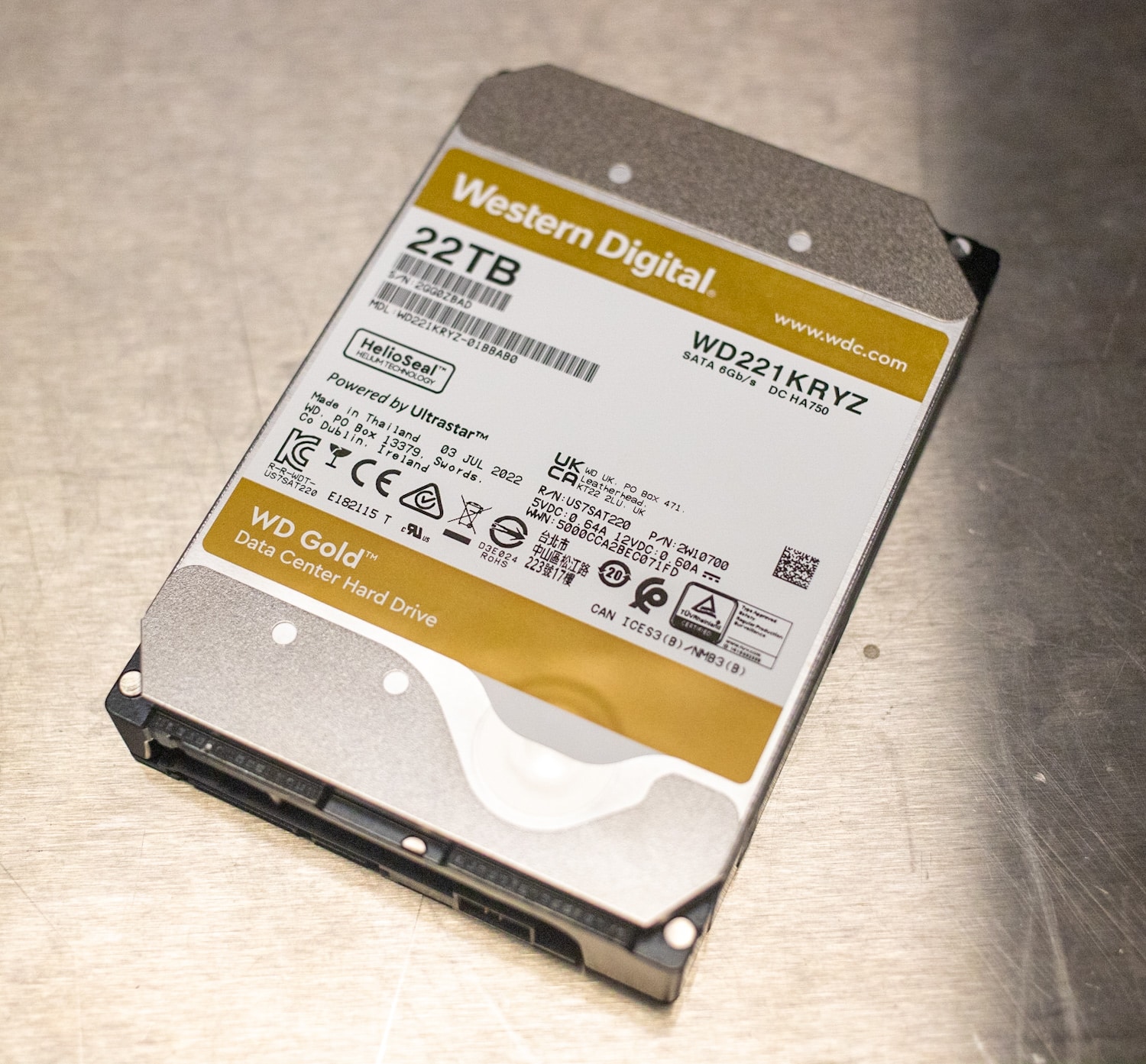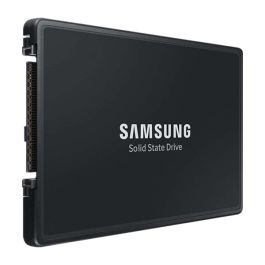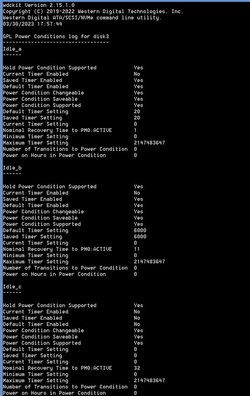EDIT: I re-read what I wrote below, and it all sounds headache-inducing complicated.
If anyone of you takes time to understand it... I will push this with WD for a while, it would just be faster with your help.
--------------------------------------------------------------
The purpose of this is to educate myself, and post on ocforums what I find out, so that others can educate themselves.
At the very least, there are things here which are unclear, and which are important.
I said "like" StorageReview, but it sounds like you also recommend them, yes I will do that, but before I do that, I would like to arm myself with more knowledge about what is going on. To that end, I would like my reply to WD to include requests for clarification from you, if things are unclear. From ocforums members reading this thread. If things are unclear at this point.
Let me first give you some more information from my research from the time PRIOR to purchasing WD Gold:
Here is a warning against me buying WD Gold:
"WD Gold is ... a higher quality drive than WD Black - but it is not as suitable for desktop use.... since the Gold... drives have TLER-Time Limited Error Recovery - which limits the amount of time a drive will attempt to recover an error. TLER is necessary for drives used in RAID to reduce the chance a drive will drop out of the RAID due to excessive time being taken to recover form an error. Desktop drives, like the WD Blacks, have no need for TLER and thus are less prone to losing data due to errors..."
It took me a while to figure out what the heck that even meant, and finally concluding to buy WD Gold because WD Gold is supposed to be THE most reliable drive Western Digital has! Who wants to lose 16TB of data!? Yes I have backups, but it's not like they are made at the same time as I am adding data.
So if WD Gold is THE most reliable drive... 250% more reliable than WD Red Pro... that was my thinking.
It was difficult for me to find good info because reviewers KEPT using PRICE as argument against buying WD Gold, completely missing the point that I can wait for a Super sale, which WD did have when I bought it, I bought this directly from WD, and in addition to various promos, like Paypal 12% Cashback, the PRICE was no longer an issue. Gold and Red were priced exactly the same at time of purchase.
More tech info:
Code:
"Drives with TLER are specifically designed for redundant RAID arrays. TLER is a drive function, where if the drive has difficulty accessing a portion of data, it will give up quickly and report an unreadable condition to the host controller. This timing is usually around 6-7 seconds maximum. The reasoning for this is that in a redundant array, all the data can be accessed or reconstructed from parity using other drives. The host controller then uses the remap function on the hard drive to mark those sectors bad, and writes the reconstructed data to spare sectors. This whole process happens seamlessly and without interruption or degradation of the RAID array. If it happens so many times that it runs out of spare sectors, the drive will be dropped from the array and marked as bad.
If you use a drive configured with TLER in a non-redundant configuration, such as a single drive or in a RAID0, the drive still acts the same - it quickly gives up reading the data. This will usually cause CRC or other errors to display in the operating system, and the data will not be able to be read. Naturally, this results in a loss of that data.
In contrast, a drive designed for use in desktop systems as single drives don’t have this timeout. Without TLER, the drive will literally try forever to get that data (and more often than not will eventually succeed). The operating system will appear to be extremely slow or frozen at this time, as it is waiting for the drive to become responsive again. If a drive without TLER is used in a redundant RAID, it will essentially cause the RAID to be degraded immediately upon hitting a single unreadable sector since the drive will appear to have become unresponsive to the host controller.
The short answer of it is…
To avoid unnecessary down time and headaches, don’t use a drive without TLER in a redundant RAID array.
It’s OK to use a drive with TLER in a non-redundant configuration, just be aware it will be more difficult to recover data from sectors that develop issues."
I have always liked super fast computing, when I double click on WD Black link, it appears in a FLASH, instantaneously.
We are not talking transfer speeds here, we are talking about WD Black file or folder
instantaneously appearing before me on my PC.
WD Gold, you double click, you then WAIT WAIT WAIT WAIT and then it appears, according to the screenshot from WD, it takes 4 seconds if it is in IDLE_C mode, and I don't care what you call the mode, but it takes seconds... it is not an instantaneous flash appearance.
Now, to say that doesn't matter? To say WD Black's operational behavior is no better than WD Gold's?
It absolutely 100% matters. It is absolutely better than WD Gold.
So
only now, as of my last post above, do we know that WD Red also never enters IDLE_C.
Therefore from that information, it is better to buy WD RED Pro than WD Gold.
Since there is a WD Red Pro in 16TB size but there is no WD Black 16TB.
Is it your understanding that WD escalation department said that WD Gold entered IDLE_C state!? Here is their complete quote:
"From the description you provided, you mention “a couple of seconds” this sounds like it’s in Idle_C and not actually spun down or in Sleep/Standby. Coming out of this idle state only takes a few seconds to get back to full speed and then load the heads. If the drive was spun down or in sleep/standby it could take up to 30 seconds to get to speed. Black does not support Idle_C which is why you see the difference. Unfortunately we do not provide a way of preventing the drive from going into this idle state."
Now, the lower level tech then said:
"We support additional idle conditions, but the drive does not enter these lower power conditions such as Idle C mode. (idle_c/standby_y or standby_z) except by explicit command from the host."
So what are the facts, according to WD?
WD Gold entered IDLE_C mode, which requires 4 seconds to pass from IDLE_C to instantaneous.
WD Gold cannot enter IDLE_C mode without specifically being told to.
OKAY, told by which Windows setting!?
Because I am telling you, it enters some kind of a mode fairly quickly after last activity, that REQUIRES seconds to pass before it is instantaneous again.
What causes the REQUIREMENT for seconds to pass before WD Gold offers instantaneous access again, if my Windows setting is set to NEVER TURN HARD DRIVE DISKS OFF?
So in conclusion, I would be grateful if you helped me word my reply to WD so that things are cleared up for you based on facts from WD, and then maybe you can explain them to me.





